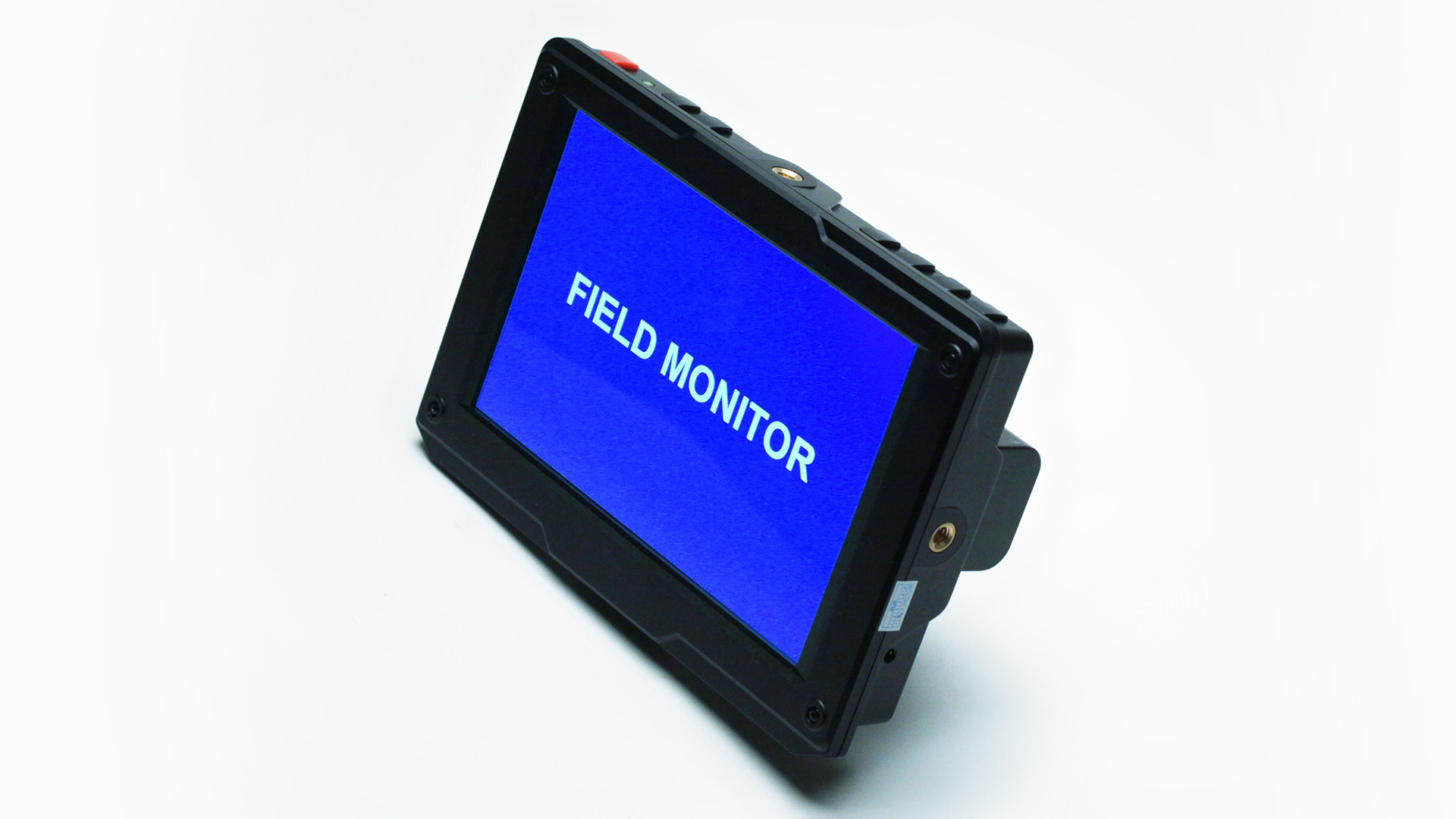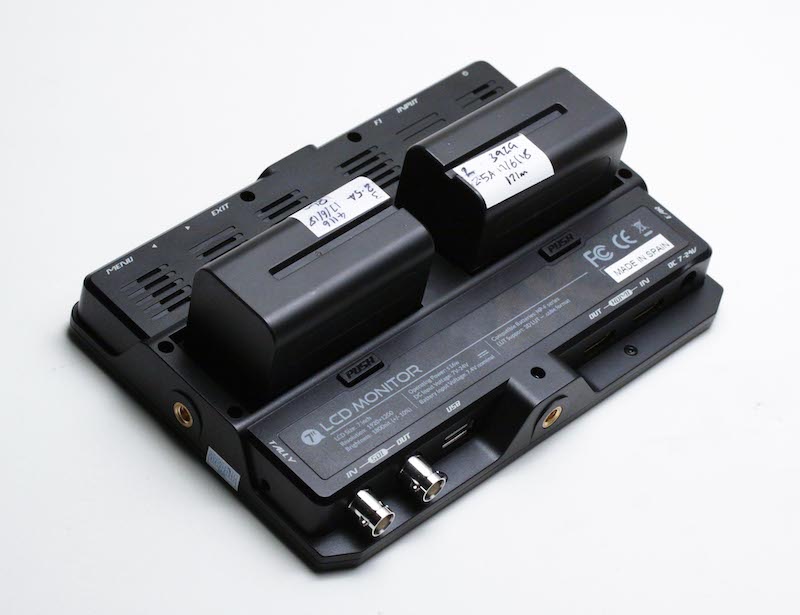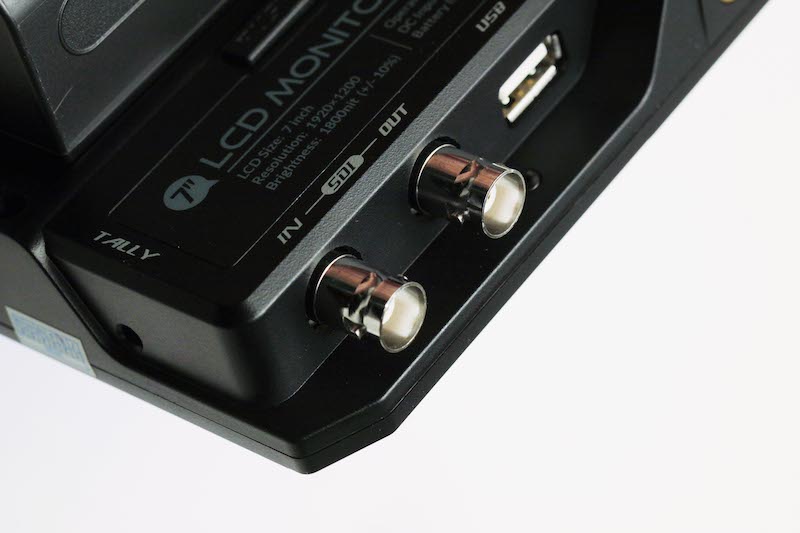
We review the PNBE 7" production monitor. A display that has some great specs but without the price tag, and produced by a not-for-profit company.

The single biggest issue in camerawork is being able to see what we’re doing. The very best LCD monitors have long since been bright enough to cope outdoors in sunlight, but our subject today is from a range that advertises up to 3000 nits of brightness in its 6 inch version. That’s a lot.
PNBE is a non-profit collective of like-minded equipment enthusiasts based in Spain, and the 7” monitor under review here is from the middle of a range of displays. It’s specified for 2000 nits of brightness (the panel on the back says 1800 plus or minus ten per cent) and has a 1920 by 1200 pixel LCD panel. Inputs include 3Gbps SDI and HDMI 1.4b, which means the HDMI is sometimes more capable than the SDI. The SDI will of course reach further. Perhaps most interestingly, there’s a USB port next to the BNCs which allows users to upload LUTs in .cube format, which is not a very common feature away from the high end.
Brightness
With LUTs, high brightness and decent connectivity, the PNBE display does well on features. The pictures are certainly pretty to the eye. There’s talk of HDR in the settings, although it’s clearly not really intended to be a precision display in terms of colour accuracy. This is high power for high viewability in bright daylight, and it works. It’s very difficult to describe monitor brightness in print. You have to see it in person, and even then it’s difficult to be objective because the response of the human visual system isn’t very linear.
To put it in numeric terms, a conventional TV is supposed to be a hair over 100 nits. Many real-world examples are a few hundred for viewability in brighter-than-ideal rooms. Particularly powerful computer monitors may approach 500, and most domestic TVs advertised as having HDR compatibility approach 1000. Nearly 2000, then, is a lot. There’s certainly no problem viewing the display in clear sunlight at 10am on a British September morning. It’s also enough to be slightly dazzling in a dimmer environment, and there’s a master backlight level control (“high,” “medium” or “low”) which presumably economise on battery life a little.

Power
The monitor takes two Sony NP style batteries and draws around 16W with the backlight at full power. A pair of NP-F750 sized batteries, the medium-sized ones with the roughly square cross section, should therefore last three hours or more. The option to hot swap is welcome, since startup from pressing the button to seeing a picture takes about ten seconds which feels longer than it really is. Ancillary features include the usual selection of test and measurement displays, scaling to a wide variety of aspect ratios, guides and markers, and the option to monitor adjacent pairs of audio tracks. There is a (tiny) internal speaker for confidence monitoring as well as a headphone output, 1/4” mounts on all four sides and a single assignable button.

As we’ve hinted, the PNBE displays are well-priced. The model reviewed here, with 2000 nits brightness and the SDI option, is $225.95 or international equivalents, while the brighter 2500-nit version does get noticeably more expensive, at $289.99. If you don’t need the SDI, the 2000-nit HDMI-only version goes for $199.99. These are competitive prices, though it’s fairly clear where costs have been controlled.
There’s no HDMI 2.0, and there’s also no 6Gbps SDI so the only way to get 4K pictures into it is via HDMI. That’s barely a problem on camera, of course, and HDMI cables can be more compact than SDI. With a 1920-wide display, there’s also no reason to put 4K into it, and situations where there’s no scaling in the camera (as with some stills cameras) are more likely to be using HDMI to begin with. There’s no waveform monitor, which is notoriously demanding on the electronics.
Conclusion
In the end, those things seem pretty understandable concessions given the price and general capability. About the only unequivocal downside is that the DC power input connector is not latching, which they always should be. It’s a very bright, compact and lightweight monitor (under half a kilo, without power) with LUTs for $225. The battery mount is sensible, with none of the fiddling around with adaptor plates seen on some displays. The casing is nicely designed without being ostentatious and the connectors are thoughtfully recessed. It’s very decent. There are six and five-inch models too, if you want something even smaller to operate from. All have full HD displays, and the six inch version ($299 with SDI) is described as achieving 3000 nits. My eyes!
If these monitors go some way toward recouping their development costs – it’s a nonprofit, remember – we’ll see some interesting new gear from PNBE. It’ll be interesting to see what a co-op can achieve.
Tags: Production


Comments